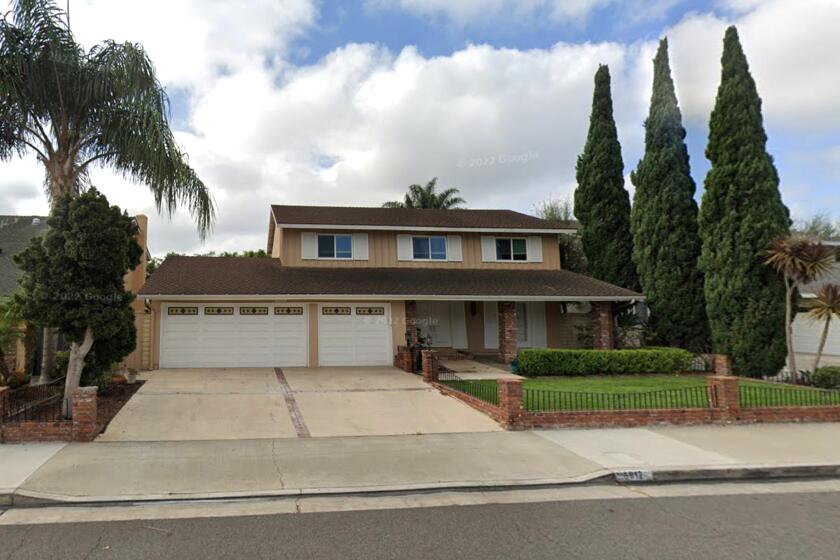Costa Mesa City Council denies permits for 3 sober-living homes
Costa Mesa City Council members unanimously rejected permit requests for three sober-living homes Tuesday night, citing city rules restricting how close such facilities can be to one another in residential areas.
SoCal Recovery, the operator of the facilities, had asked the council to overturn the Planning Commission’s denial of the permits, which are needed for its sober-living homes serving up to six men each at 783 Hudson Ave. and 208 Cecil Place and for another facility with as many as 32 residents — plus two house managers — in six units at 175 E. 21st St.
The permits are required under city ordinances adopted in 2014 and 2015. Sober-living homes typically house adults recovering from alcohol and drug addiction.
Council members said SoCal Recovery facilities violate city rules requiring that sober-living homes be at least 650 feet from one another and from other group homes or licensed alcohol- and drug-treatment facilities in residential areas.
According to city officials, the purpose of the distance requirement is to keep such facilities from clustering and transforming residential neighborhoods into institutionalized settings.
“We are doing everything we possibly can … within the parameters of the law so that we can protect the clients — the patients that come into these rehab homes, many of them coming from out of area — as well as the neighborhoods in our community,” said Councilwoman Katrina Foley.
Having too many of those facilities too close to one another can affect the neighborhoods and might not be beneficial to recovering addicts who are trying to transition into a typical community setting, city officials have said.
“What I see here is the institutionalization of a neighborhood,” said Mayor Sandy Genis. “When you have up to 32 people who would be living together, it’s no longer a typical residential facility. It’s no longer an opportunity to become integrated into the mainstream.”
City staff identified at least one other sober-living home or treatment facility within 650 feet of each of the SoCal Recovery properties, though several public speakers said there were more that weren’t noted.
A steady stream of residents who live near the SoCal Recovery homes told the council that the facilities have had many negative effects in their neighborhoods, causing problems with noise, traffic, litter and parking, among other quality-of-life issues.
Others alleged that recent upticks in crime they’ve noticed — including car burglaries, mail theft and residential break-ins — are related to the homes.
The residents said Costa Mesa already has more than its fair share of sober-living homes and that the council shouldn’t waver on enforcing the 650-foot separation requirement.
Kenneth Norwood of SoCal Recovery characterized many of the allegations against the facilities as unfounded and asked to see proof of the issues raised by residents.
He said his goal is to help his clients in their battles with addiction and that some of the comments during Tuesday’s meeting were “ridiculous.”
“I bet you everybody in here knows somebody who has a problem with alcoholism or addiction,” he told the council. “Maybe they just don’t care. I don’t know.”
In documents submitted to the city, SoCal Recovery officials objected to the way Costa Mesa calculates the 650-foot rule, saying the requirement should be based on walking distance rather than a bird’s-eye measurement.
City officials said the bird’s-eye method is standard.
Twitter @LukeMMoney
All the latest on Orange County from Orange County.
Get our free TimesOC newsletter.
You may occasionally receive promotional content from the Daily Pilot.




